For some integer values python will internally use "long reperesentation" And in your case this happens somewhere after n=63, so your theoretical time complexity should be correct only for values of n < 63.
For "long representation" multiplying 2 numbers (x * y) have complexity bigger than O(1):
for x == y (e.g. x*x) complexity is around O(Py_SIZE(x)² / 2).
for x != y (e.g. 2*x) multiplication is performed like "Schoolbook long multiplication", so complexity will be O(Py_SIZE(x)*Py_SIZE(y)). In your case it might a little affect performance too, because 2*x*x will do (2*x)*x, while faster way would be to do 2*(x*x)
And so for n>=63 theoretical complexity must also account for complexity of multiplications.
It's possible to measure "pure" complexity of custom pow (ignoring complexity of multiplication) if you can reduce complexity of multiplication to O(1). For example:
SQUARE_CACHE = {}
HALFS_CACHE = {}
def square_and_double(x, do_double=False):
key = hash((x, do_double))
if key not in SQUARE_CACHE:
if do_double:
SQUARE_CACHE[key] = 2 * square_and_double(x, False)
else:
SQUARE_CACHE[key] = x*x
return SQUARE_CACHE[key]
def half_and_remainder(x):
key = hash(x)
if key not in HALFS_CACHE:
HALFS_CACHE[key] = divmod(x, 2)
return HALFS_CACHE[key]
def pow(n):
"""Return 2**n, where n is a non-negative integer."""
if n == 0:
return 1
x = pow(n//2)
return square_and_double(x, do_double=bool(n % 2 != 0))
def pow_alt(n):
"""Return 2**n, where n is a non-negative integer."""
if n == 0:
return 1
half_n, remainder = half_and_remainder(n)
x = pow_alt(half_n)
return square_and_double(x, do_double=bool(remainder != 0))
import timeit
import math
# Values of n:
sx = sorted([int(x) for x in [100, 1000, 10e4, 10e5, 5e5, 10e6, 2e6, 5e6, 10e7, 10e8, 10e9]])
# Fill caches of `square_and_double` and `half_and_remainder` to ensure that complexity of both `x*x` and of `divmod(x, 2)` are O(1):
[pow_alt(n) for n in sx]
# Average runtime in ms:
sy = [timeit.timeit('pow_alt(%d)' % n, number=500, globals=globals())*1000 for n in sx]
# Theoretical values:
base = 2
sy_theory = [sy[0]]
t0 = sy[0] / (math.log(sx[0], base))
sy_theory.extend([
t0*math.log(x, base)
for x in sx[1:]
])
print("real timings:")
print(sy)
print("\ntheory timings:")
print(sy_theory)
print('\n\nt/t_prev:')
print("real:")
print(['--' if i == 0 else "%.2f" % (sy[i]/sy[i-1]) for i in range(len(sy))])
print("\ntheory:")
print(['--' if i == 0 else "%.2f" % (sy_theory[i]/sy_theory[i-1]) for i in range(len(sy_theory))])
# OUTPUT:
real timings:
[1.7171500003314577, 2.515988002414815, 4.5264500004122965, 4.929114998958539, 5.251838003459852, 5.606903003354091, 6.680275000690017, 6.948587004444562, 7.609975000377744, 8.97067000187235, 16.48820400441764]
theory timings:
[1.7171500003314577, 2.5757250004971866, 4.292875000828644, 4.892993172417281, 5.151450000994373, 5.409906829571465, 5.751568172583011, 6.010025001160103, 6.868600001325832, 7.727175001491561, 8.585750001657289]
t/t_prev:
real:
['--', '1.47', '1.80', '1.09', '1.07', '1.07', '1.19', '1.04', '1.10', '1.18', '1.84']
theory:
['--', '1.50', '1.67', '1.14', '1.05', '1.05', '1.06', '1.04', '1.14', '1.12', '1.11']
Results are still not perfect but close to theoretical O(log(n))



